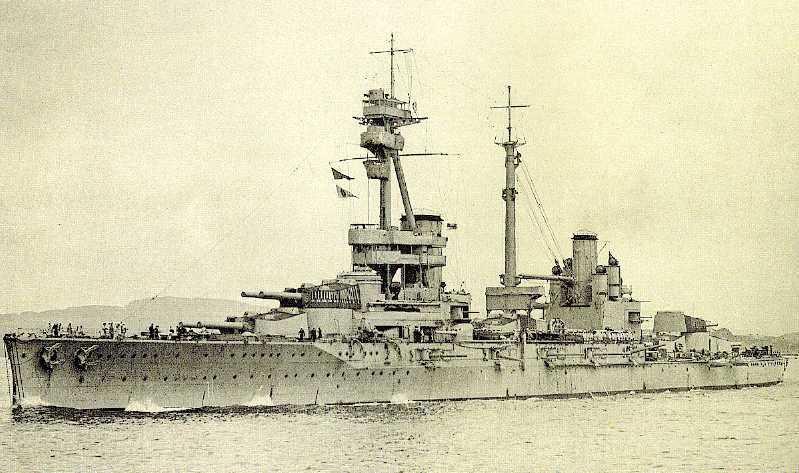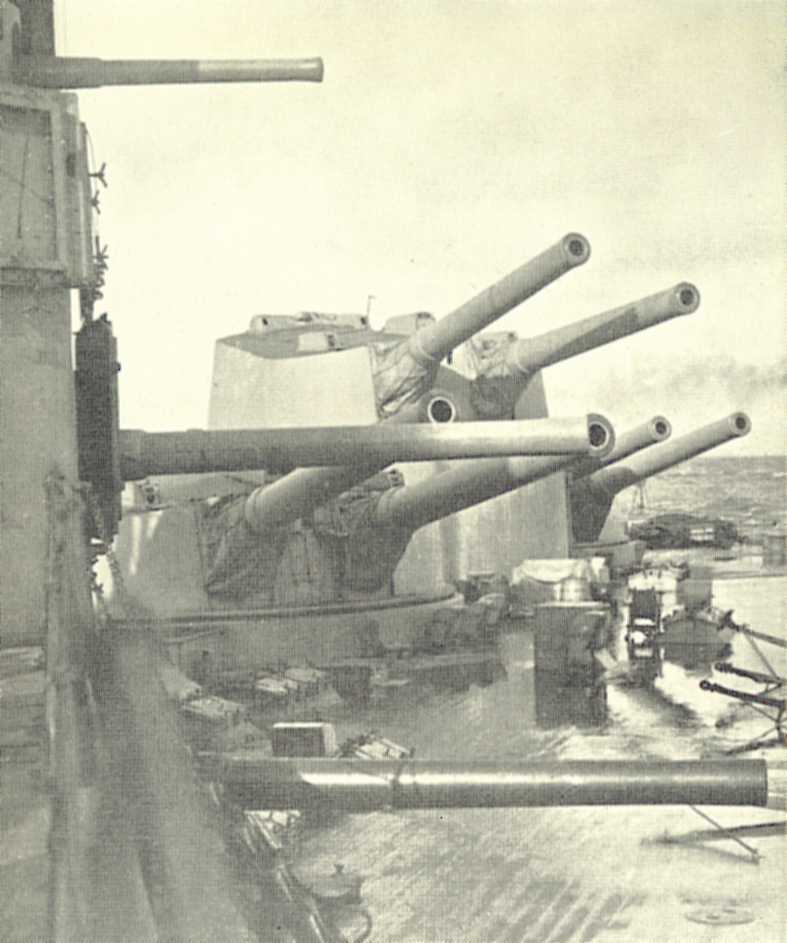|
Rio de Janeiro was a very unusual design in that she had seven twin turrets fitted, the most of any dreadnought ever built. The turrets themselves were developed by Elswick as a more or less private venture and their design was then carried over to the 14" (35 cm) twin turrets developed for HMS Canada (ex-Almirante Latorre). Rio de Janeiro was taken over by the British at the start of World War I and renamed HMS Agincourt. It is noted that when she was first taken over, Agincourt lacked sub-caliber guns and as a result firing practices were restricted and her battle efficiency was reduced. There were many problems with the newly designed hydraulic loading gear during her first firing trials and the electric igniters failed to function at the first salvo, requiring use of the back-up percussion method. There were also problems with the shells themselves, which showed an alarming tendency to break up in flight. This was attributed to the age of the shells, some of which were stenciled "Repaired in 1892." There were also design problems with the guns, such as the butt strap joining A and B tube which was thought to impede the projectiles as they passed and to a poorly designed forcing cone, which was thought to cause the shells to not seat properly. At Jutland (Skagerrak) she was in action for a short period and where it was reported that the sheet of flame generated when she fired her guns "was big enough to create the impression that a battle cruiser had blown up; it was awe inspiring." Agincourt fired a total of 144 rounds from her 12" (30.5 cm) guns during this battle, her only combat engagement. HMS Agincourt is notable for having had Dr. Oscar Parkes, author of "British Battleships: 1860 - 1950," as a crewmember. Constructed of a heavy inner A tube in three parts, full length wire, B tube and jacket along with breech bush, screwed on ring and Welin breech block. A total of fourteen guns were made and a further seven to a modified design which had a one-piece A tube and tapered inner A tube. |

HMS Agincourt showing her seven main gun
turrets in 1918
|

HMS Agincourt in 1918
|

HMS Agincourt getting her last gun fitted
in August 1914
|

Stern cluster of 12"/45 (30.5 cm) Turrets
with 6" (15.2 cm) guns in foreground and
3" (7.62 cm) at top left
|